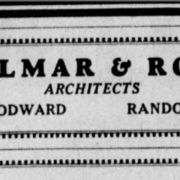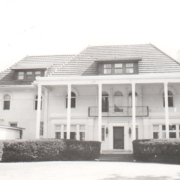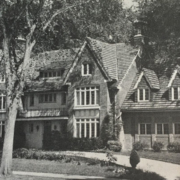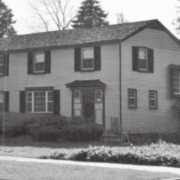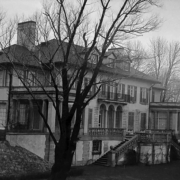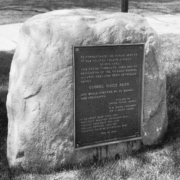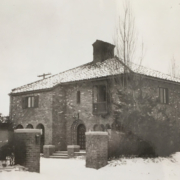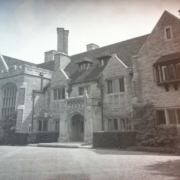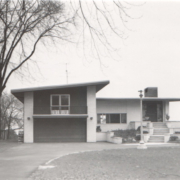Historical Architecture of Grosse Pointe – Architects Pollmar and Ropes
Last week we headed to one of the finest homes ever built in Grosse Pointe Shores, 880 Lake Shore, designed by architectural legend Albert Kahn in 1916, for Clinton Goodloe Edgar. This week we return to the work of Pollmar and Ropes. We first touched on the work of this architectural firm a couple of weeks ago when we presented the history of 900 Lake Shore, a home that our files indicate was designed by the duo.
The firm of Pollmar and Ropes dates to 1902, when Detroit based architects George H. Ropes and F. Carl Pollmar became partners. The firm was prolific in the city during the first 30 years of the 20th century, specializing in the design of apartments, stores, and industrial buildings. Their work was often described as a “modern solution”. From 1911 – 1918 it appears the duo employed William H. Lundy, an architect and engineer. After a short stint at Ford Motor Company, they rehired Mr. Lundy in 1919. He would stay with the firm until 1931, at which point on May 1, 1931, Lundy became a partner of the firm, which was subsequently renamed Pollmar, Ropes & Lundy.
It appears a major project for Pollmar and Ropes was the four-story Yorba Hotel located at Lafayette Boulevard. It was completed in the summer of 1926, at a cost of more than $500,000 (around $8.7m today). It contained approximately 300 sleeping rooms, a spacious lobby, luxuriously finished ladies’ and men’s lounges, a private dining room, and reception rooms on each floor. It was reported the rooms contained the most modem conveniences of hotel construction. Source: and image Detroit Free Press (August 1916). Color image courtesy of historicdetroit.org
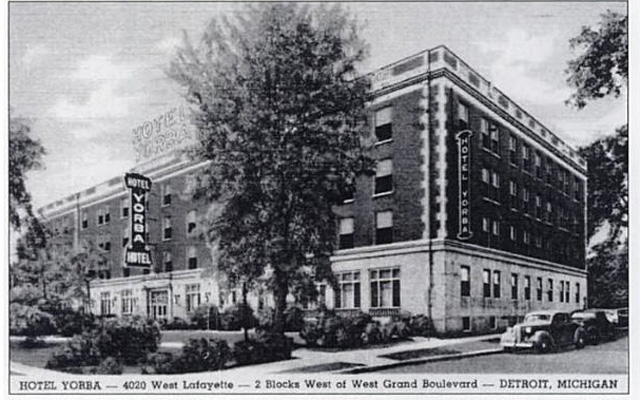
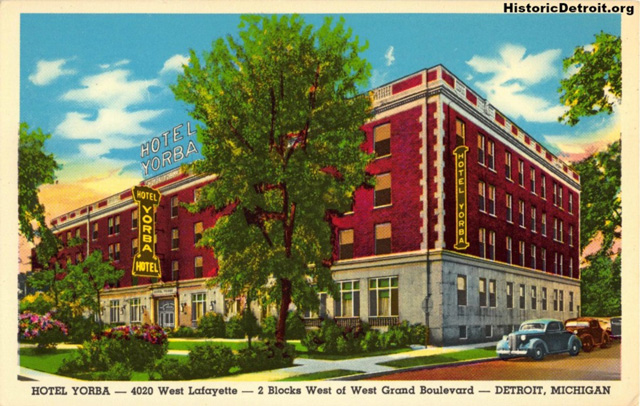
George H. Ropes was born in Boston, MA, on August 14, 1868. His father was a respected architect who created public buildings and fine residences in Connecticut. George Ropes studied architecture at the Kansas State University and received practical training in his father’s office. He then began his career with the firm of Kimball and Walker in Omaha, Nebraska, where he worked until 1895. During that year it is reported he secured a position with the Detroit firm of Donaldson & Meier. Then in 1902 he went into partnership with F. Carl Pollmar. They would work together for the rest of their career(s). George H. Ropes passed on November 16, 1937. Source: Praybook.com
Carl Pollmar was born San Antonio, Texas, 1872. He studied architecture under Emil Lorch, private tutors, and at Columbia University. He then spent three months studying architecture in “principal countries of Europe.” It appears he moved to Detroit in the late 1890’s. Prior to starting the firm with George Ropes, he had his own practice in Detroit, which was registered in 1901. F. Carl Pollmar passed on September 17, 1961. Source: Michigan Society of Architects (March 1951).
900 Lake Shore
It appears 900 Lake Shore was designed by Pollmar and Ropes, possibly their first residential project in Grosse Pointe. Completed in 1913, the property was a striking 6,000 sq ft, 17-room Southern Colonial style home designed for George Osius – the first president of the Village of GP Shores. The front elevation had six tall narrow columns, several delicate arched windows on the second floor, a wrought iron balcony, along with a green tile roof that incorporated a sizable rectangular dormer window. It was constructed from brick with a white stucco exterior that was in keeping with the style of architecture present on this part of Lake Shore during this era. We understand “the house had many interesting features including a basement garage with a turntable for ease of moving automobiles, a very modern kitchen, and a study with a beautiful desk. The property had almost 400 feet of lake frontage and became a social and civic center of the community.” Source: The Village of Grosse Pointe Shores, author Arthur M. Woodford. It is apparent 900 Lake Shore was sold for the final time in May 1987. It was then raised (date unknown) and a new home was built in its place. You can read the full story by clicking here.

1009 Kensington – Designed for Joseph Perrien in 1917.
The property is a classically designed center entrance Georgian Colonial home. The exterior of this symmetrical brick-built house features multiple double hung windows with black shutters and a brick keystone above each window on the first floor. The main focal point, however, is the central covered porch and the three dormers in the roof. The porches on the left- and right-hand sides were later additions. The property has an excellent floor plan featuring a 13’ x 19’ sq ft living room, a 13’ x 14’ sq ft dining room, a 10’ x 15’ sq ft family room, butler’s pantry, and a terrace at the rear of the home. In a listing (dated November 1973) we understand James the groundskeeper still lived on the 3rd floor.
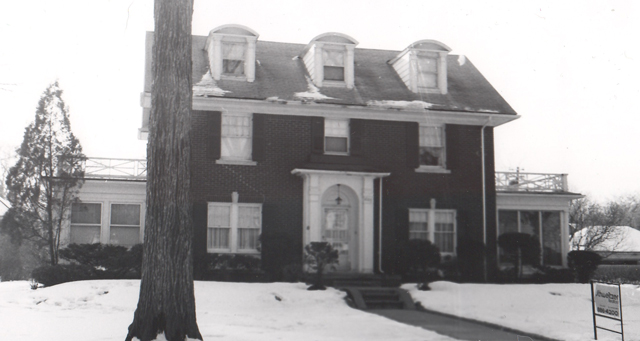
1302 Kensington – Designed for Herman Brock in 1924.
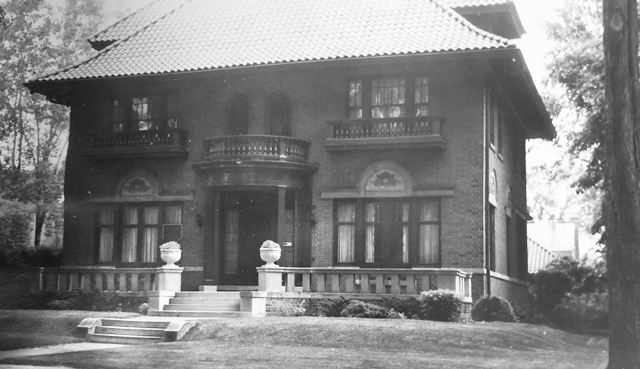
Some other projects in Detroit by Pollmar and Ropes include:
- Holmes Building – 1902 (image historicdetroit.org via Burton Historical Collection)

- The Roycourt Apartment Building – 1903
- Residence for Louis Welt – Hancock Avenue – 1905
- The Manhattan Apartments – 1905
- Four story brick store for the Detroit Candy Company – 1907
- Gordon-Pagel Bakery – 1907 (image historicdetroit.org)
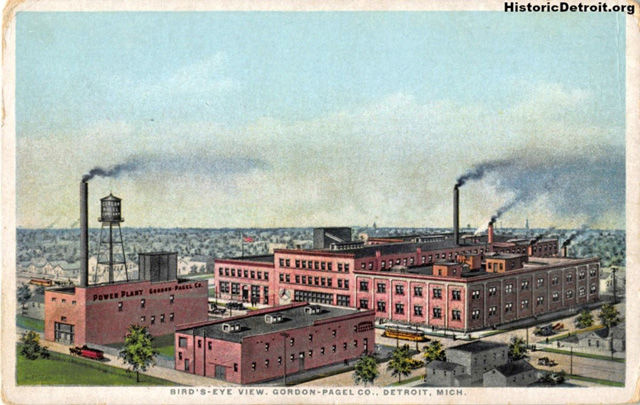
- Terraced houses – 1907
- Sherbrooke Apartments – 1913
- Warehouse for C.F Smith – 1916 (image The Western Architect, Nov 1916)

- Factory for Scheinman & Company – 1916 (image The Western Architect, Nov 1916)

- Factory for the Detroit Oil Cloth Company – 1917
- Furniture Store for George F. Streng – 1924
- Yorba Hotel – 1924
- Koenig Residence – Palmer Woods – 1924 (image Michigan Architect and Engineer, Jan 1924)

Pollmar and Ropes were two skilled architects who made a huge impact on the architectural scene in Detroit thanks to the apartments and industrial buildings they designed during the early 20th century. Thankfully some of their residential work is still around, with three superb examples in Grosse Pointe.
*Photos courtesy of the Higbie Maxon Agney archives unless stated.
** Research, information, and data sources are deemed reliable, but accuracy cannot be fully guaranteed.
Written by Katie Doelle
Copyright © 2024 Higbie Maxon Agney & Katie Doelle

